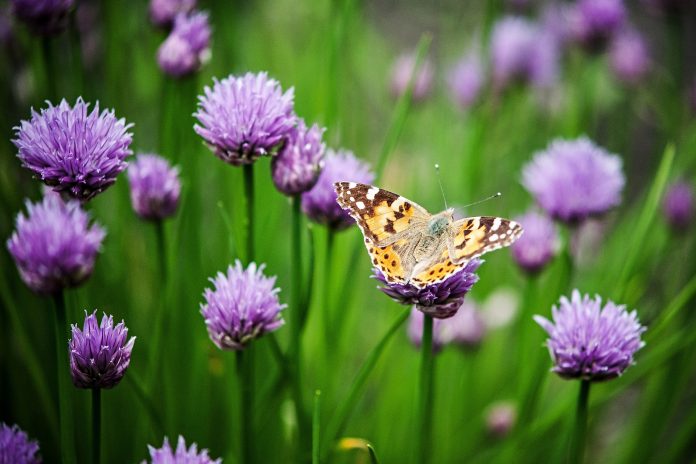This summer, if you’d like to save some money (and blood, sweat and tears), convert a portion of your grassy backyard to native vegetation.
Maintaining turf is expensive, unhealthy and, to many people, boring. With less grass to mow, you’ll save time and money.
American homeowners spend more than $30 billion per year on lawn care. That works out to about $500 per home.
And let’s not forget about the fresh, potable water needed to keep lawns green — nearly eight billion gallons every day.
Finally, the Environmental Protection Agency reports that Americans use 800 million gallons of gasoline for lawn care each year.
In the process, we also spill another 17 million gallons that seeps into groundwater or runs off into storm drains.
Removing gasoline, fertilizers, herbicides, pesticides and other chemicals from the lawn care equation makes backyards safer and healthier for your family and pets to enjoy.
Instead, let’s focus on native vegetation to landscape backyards.
Native plants attract butterflies, bees and other insects that pollinate more than half of the fruits and vegetables we eat every day. As a bonus, they add a splash of color to backyards.
Lawn industry
Admittedly, shifting from a sterile, well-manicured, grassy backyard monoculture to a more natural space requires an open mind.
So how did we arrive at the notion that backyards should be tidy patches of sterile open space in the first place?
The answer is that it’s largely our parents’ and/or grandparents’ fault. To be fair, however, they were duped by decades-long marketing and advertising campaigns.
After World War II, veterans returned home to federally subsidized higher education and home loans, and good-paying blue-collar jobs.
New houses with attractive backyards were affordable. And those backyards became status symbols that meant homeowners had the time and money to care for their property.
Before long, corporate America heard opportunity knocking.
With the advent of television advertising, converting the masses to adopt the American dream — a Cape Cod home with a picket fence and a lush green yard — was easy.
And, of course, the dream required grass seed, lawnmowers, fuel, chemicals and water to achieve the most beautiful backyard in the neighborhood.
Soon, homeowners competed to devote their free time and hard-earned dollars to create picture-perfect lawns. The total amount of backyard habitat in the U.S. is staggering.
Estimates vary, but American turf grass lawns cover about 62,500 square miles. That’s almost the size of Washington state (66,544 square miles).
Avoid exotic plants
Instead of grass, encourage a variety of wildflowers, shrubs and trees. But be sure to select native species and not exotics.
Nonnative, or “exotic,” species spread rapidly and dominate landscapes because they outcompete native species for sunlight, water and nutrients.
Some decrease the diversity of essential microorganisms in the soil. Exotic plants wreak ecological havoc on native plant communities.
Nonnative plant impact
Biologists have only recently begun to understand the ecological impact when exotic plants replace natives.
Research has revealed the effects on the food habits of native plant-eating insects and other insect-eating predators such as birds, lizards and frogs.
The vast majority of plant-eating insects are specialists; they eat only a few closely related groups of plants. (Monarch butterfly caterpillars, for example, eat only milkweeds.)
These relationships have evolved over eons, so native plant-eating insects are specifically adapted to use their preferred host plants’ tissues as food.
Furthermore, when insects become specialized to eat closely related plants, they lose their ability to efficiently consume and digest unrelated plant species.
As invasive exotics begin to dominate a landscape, native insects are unable to use the energy stored in tissues of nonnative plants.
Over time, that inability is devastating for native plant-eating insects and their predators such as birds, reptiles and amphibians.
Invasive plants have the almost inevitable ability to disrupt entire food chains and native ecosystems. The solution is simple.
Choose native plants
Property owners large and small must begin to landscape with native plants.
In the long run, natural backyards will not only be more ecologically responsible, they are cheaper to create and easier to maintain.
Adapted to local conditions, natives grow and prosper vigorously with minimal human assistance. Bottom line — “Go native!”













